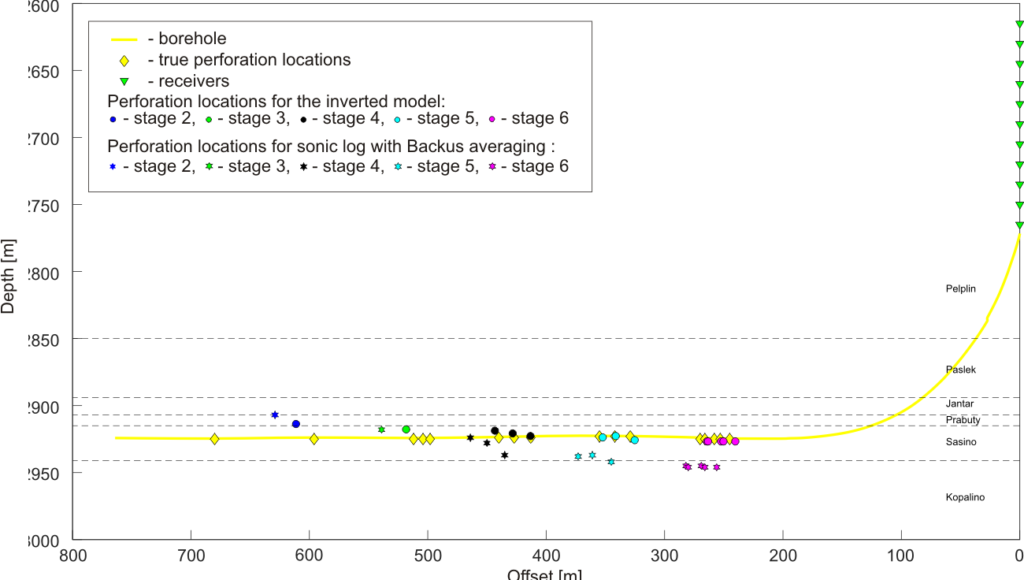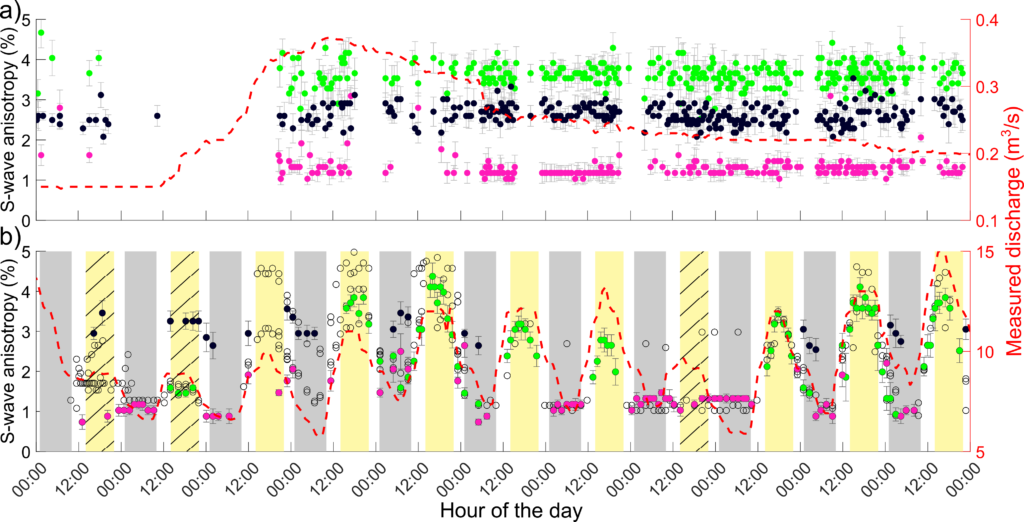Seismic anisotropy and S-wave splitting

In order to obtain proper microseismic event locations an accurate velocity model is necessary. Due to internal structure of shales and fractures seismic velocities depend on the incidence angle, and hence anisotropy needs to be taken into account when inverting for the velocity model. Following figure shows how accurate can we calibrate the velocity model when accounting for anisotropy.
A paper discussing ignoring the effect of anisotropy in a borehole setting is available here.

Glacial ice is also anisotropic due to ice crystals alignment and spatially organised different scale discontinuities (from micro-cracks to crevasses).
My research conducted on Rhonegletscher in Swiss Alps showed that glacial ice can dynamically react to changing meltwater conditions that stimulate expansion and contraction of englacial fractures.
